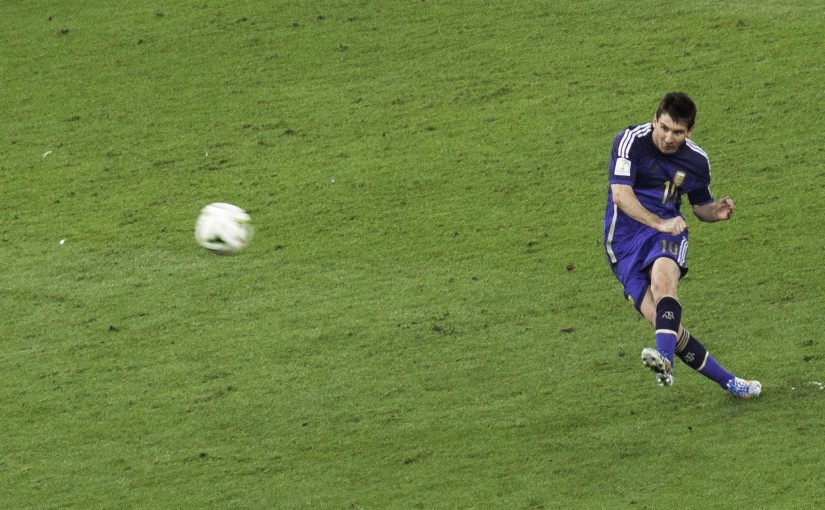(Photo credit: jikatu/Flickr)
The World Cup showcased soccer at its finest with teams duking it out in matches in Brazil over the last four weeks.
The event happens every four years, but before it begins, athletes participate in rigorous preparation. Soccer players focus much of their training on their dribbling and mental prep, but come game time their food and water regimen goes a long way.
Water breaks for the first time
History was made at this year’s World Cup when a water break was imposed for the first time ever during a match. According to ABC News, temperatures soared to a blistering 84 degrees Fahrenheit (29 degrees Celsius) with a humidity index of 70 per cent during the game between US and Portugal, making it difficult for players on both sides who were sweating within minutes of the match’s start. A one-minute water break was called 40 minutes into the game to allow players to rehydrate and cool off before continuing to play.
FIFA was ordered by the Brazilian Court to implement water breaks within 30 minutes of each half when the temperature climbed higher than 32 degrees Celsius on the Wet Bulb Globe temperature index, which measures the amount of heat stress. Although FIFA has its own guidelines related to water breaks, the court felt the ruling was necessary to ensure they followed through. If they didn’t, FIFA organizers would pay the price with a hefty 200,000 Reals ($96,738 CAD) fine for each match.
What causes cramping?
England’s players saw firsthand how not drinking enough water can hurt their game. It was a shame to watch players suffering from cramps during the country’s match up against Italy where the intense humidity in Manaus, a city within the Amazon rainforest, forced them to tone down their playing intensity. The English team’s manager, Roy Hodgson, admitted that players cramped during the second half from lack of hydration. “We’ve worked very hard on that (hydration). We still did cramp up quite a lot,” Hodgson told MLSSoccer.com. “But the tempo of the game was quite fast … It was played at the proper tempo and the heat and humidity did take its toll.”
It’s a little known fact, but it’s common for athletes to be dehydrated, says a Kinesiology professor at the University of Connecticut. If you’ve lost one or two per cent of your body weight to dehydration, it isn’t a big deal, but more than that and your performance takes a hit. England served as an unfortunate example of that.
When dehydrated, the body works harder than it needs to; the heart has to work harder to pump blood to the brain, skin and muscles, and the more weight lost to dehydration, the higher the body’s temperature will rise. For every one per cent of weight lost, the body heats up by 0.15 to 0.20 degrees Celsius; and that’s something you don’t want.
For sports such as track and field or baseball, it’s easier to take a break and drink water, but the same can’t be said about the faster-paced soccer. Also, if you’re from a country that isn’t as humid, the situation is only exacerbated, which was the case for players from dryer/more arid European countries.
A study published in the International Journal of Sports Medicine found that during a 90-minute soccer match, the average amount of sweat ranged from 1,672 to 3,138 ml, but soccer players only replenished about (about 30 ml) of fluid for each pound of body weight a day to keep their bodies in tip top shape.
Proper hydration can make or break a team in any sport; once muscle cramps set in, it’s difficult to recover quickly. After the match, athletes need to take part in contrast bathing, which is when they alternate between bathing in warm water and then cold water for short periods of time to relieve pain and reduce muscle damage. Rest is also a must on the agenda in order to give their bodies the necessary time to recuperate; but this reduces their time to prep for the next match, a disadvantage most players can’t afford.
Sometimes it’s easy to forget the importance of drinking water, especially when you’re competing to win. If you don’t enjoy water’s taste, you’re not alone; why not try a few ways to make it a little bit more bearable? Liquid water enhancers with fun flavours like iced tea or fruit punch will take plain ol’ H2O to the next level and there are also natural ways that pack a flavourful punch and deliver some needed nutrients.
